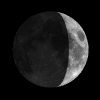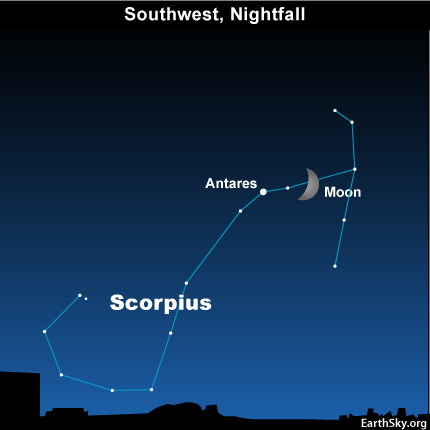Courtesy of EarthSky
A Clear Voice for Science
www.EarthSky.org

 Here is a familiar figure – to stargazers – and to Texans like me. Just yesterday, my little neighbor – age 5 – told me she saw a scorpion. To those of us who watch the skies, the chance to see a celestial Scorpion is present mostly in the summer months. Here it is – Scorpius the Scorpion – only visible at nightfall and very early evening now that summer has faded away.
Here is a familiar figure – to stargazers – and to Texans like me. Just yesterday, my little neighbor – age 5 – told me she saw a scorpion. To those of us who watch the skies, the chance to see a celestial Scorpion is present mostly in the summer months. Here it is – Scorpius the Scorpion – only visible at nightfall and very early evening now that summer has faded away.
Bright star in east? Might be planet Jupiter, nearly at its closest since 1951.
The Scorpion is one of the few constellations that looks like the creature for which it was named. It’s that curved ‘tail’ of stars looping down toward the southern horizon that does the trick. The star Antares is sometimes called the Heart of the Scorpion. It is a fiery red star, one of the brightest stars in the sky, with a reputation for twinkling fiercely. The fierce twinkling no doubt stems from the fact that, to us in the northern hemisphere, Antares arcs across the southern sky and is often seen low in the sky. Moreover, when we look low in the sky, we are looking through a thicker-than-usual mass of Earth’s atmosphere. The atmosphere, of course, is what causes stars to twinkle.
Tonight’s waxing crescent moon is nearly 40% illuminated by sunshine. The first quarter phase will not come until the night of September 14-15 in North America. The moon is found in Scorpius this evening, quite close the constellation’s brightest star Antares, the Scorpion’s Heart.
![]() Written by Deborah Byrd
Written by Deborah Byrd
Astronomy Picture of the Day from NASA/JPL
U.S. Naval Observator Astronomical Information center
The York County Astronomical Society
 Print This Post
Print This Post








